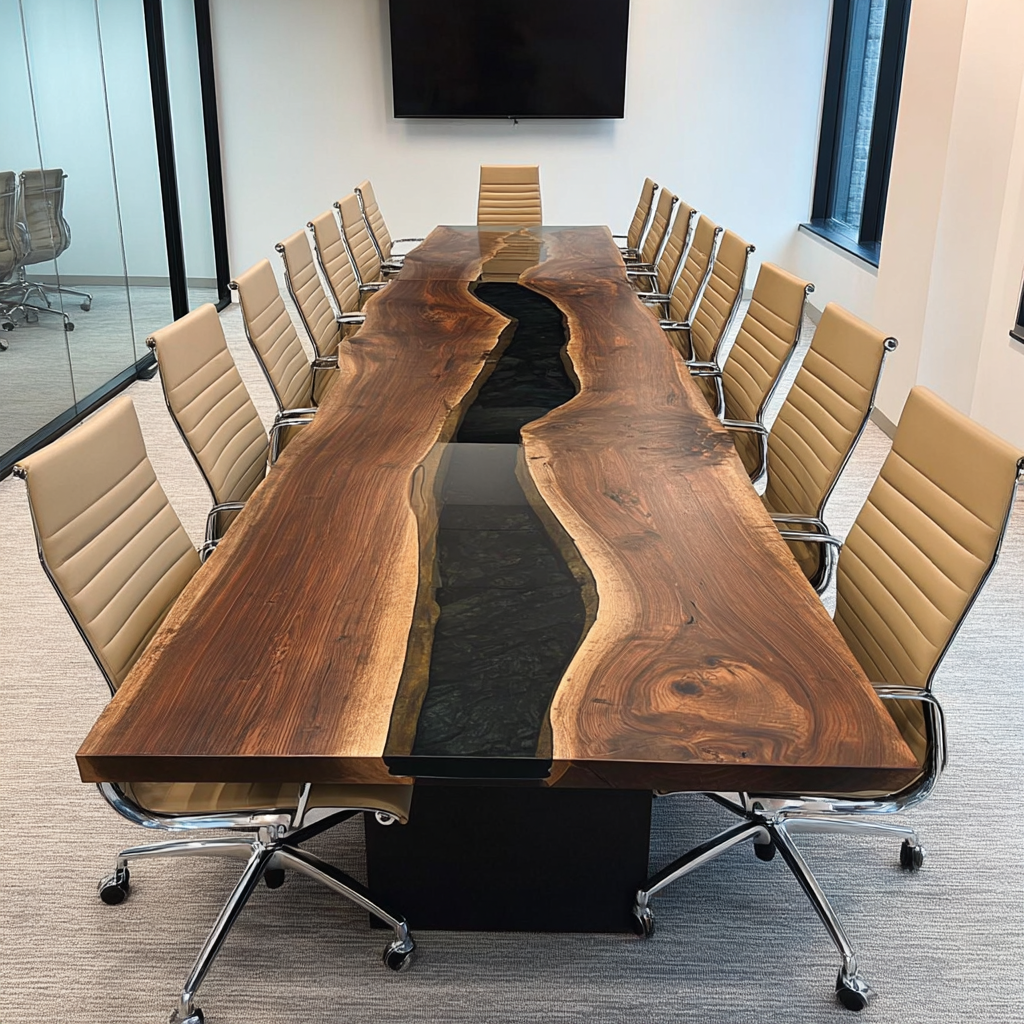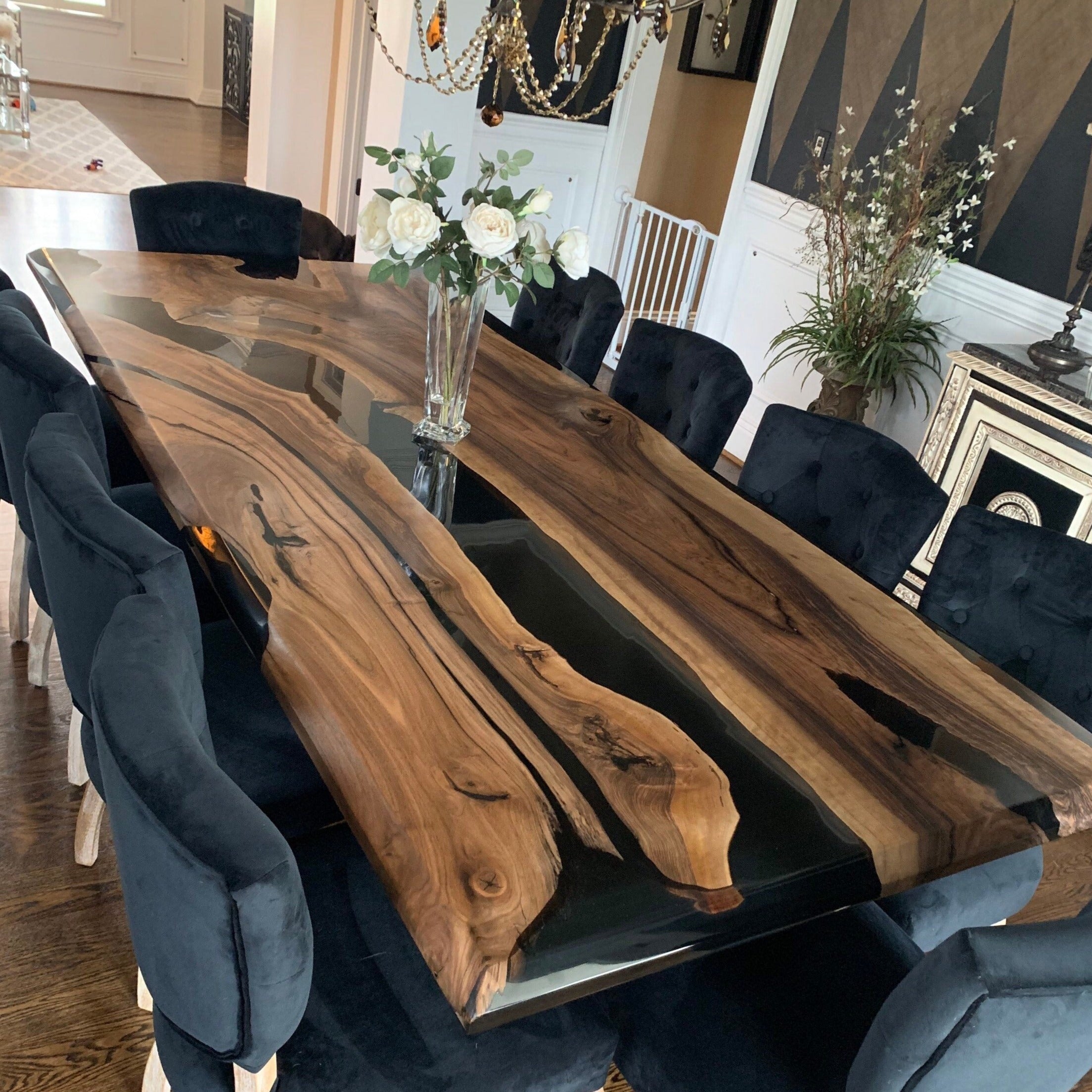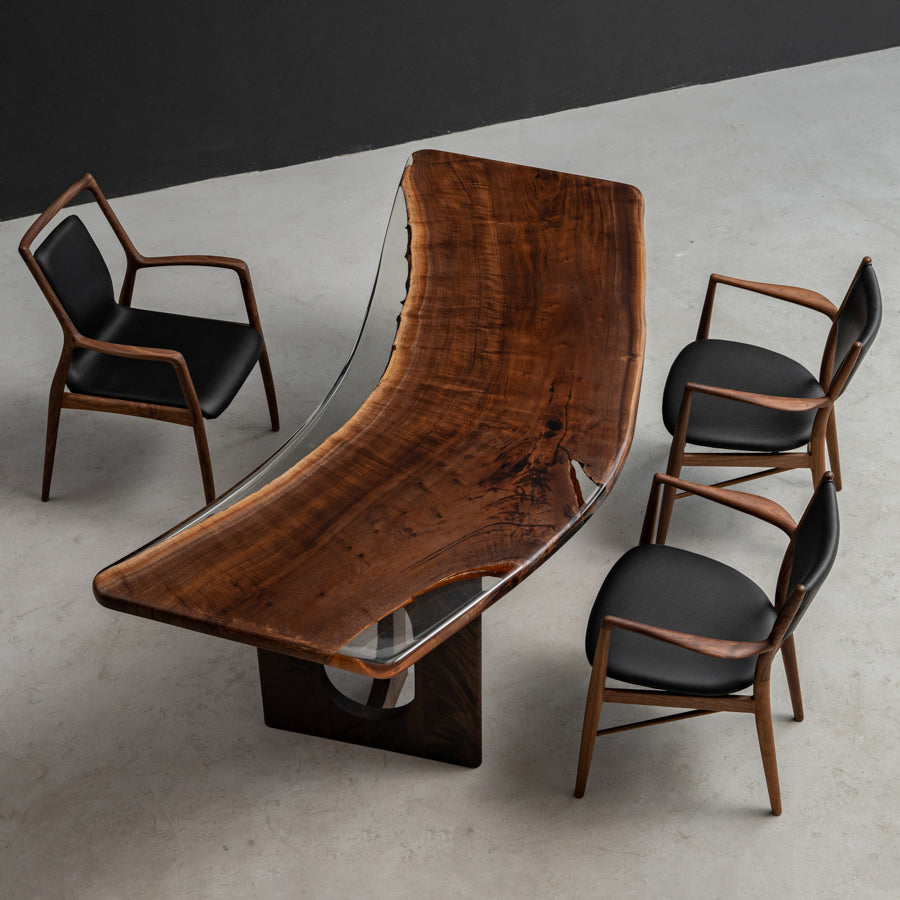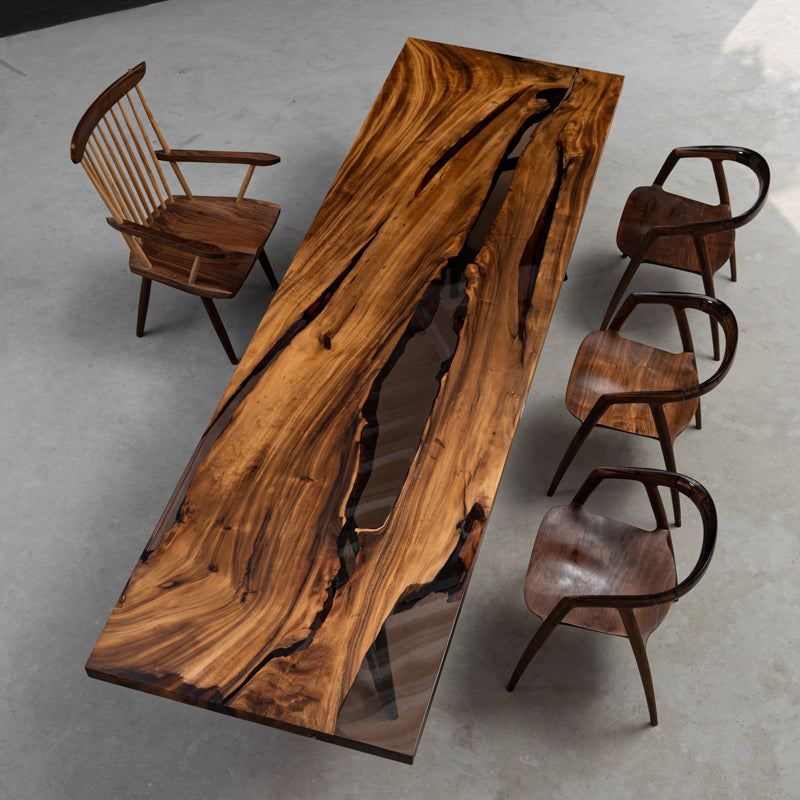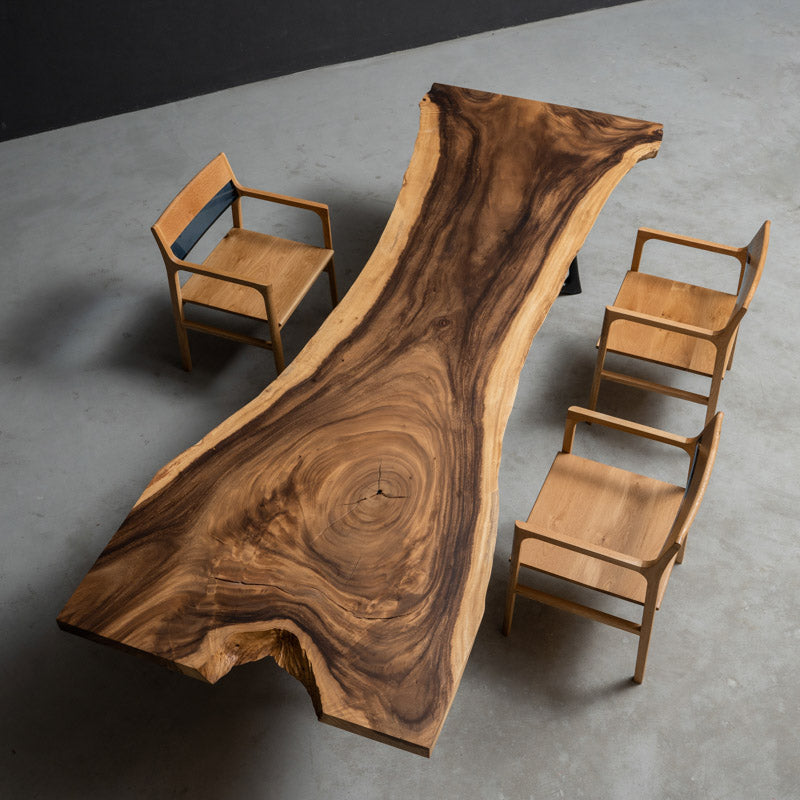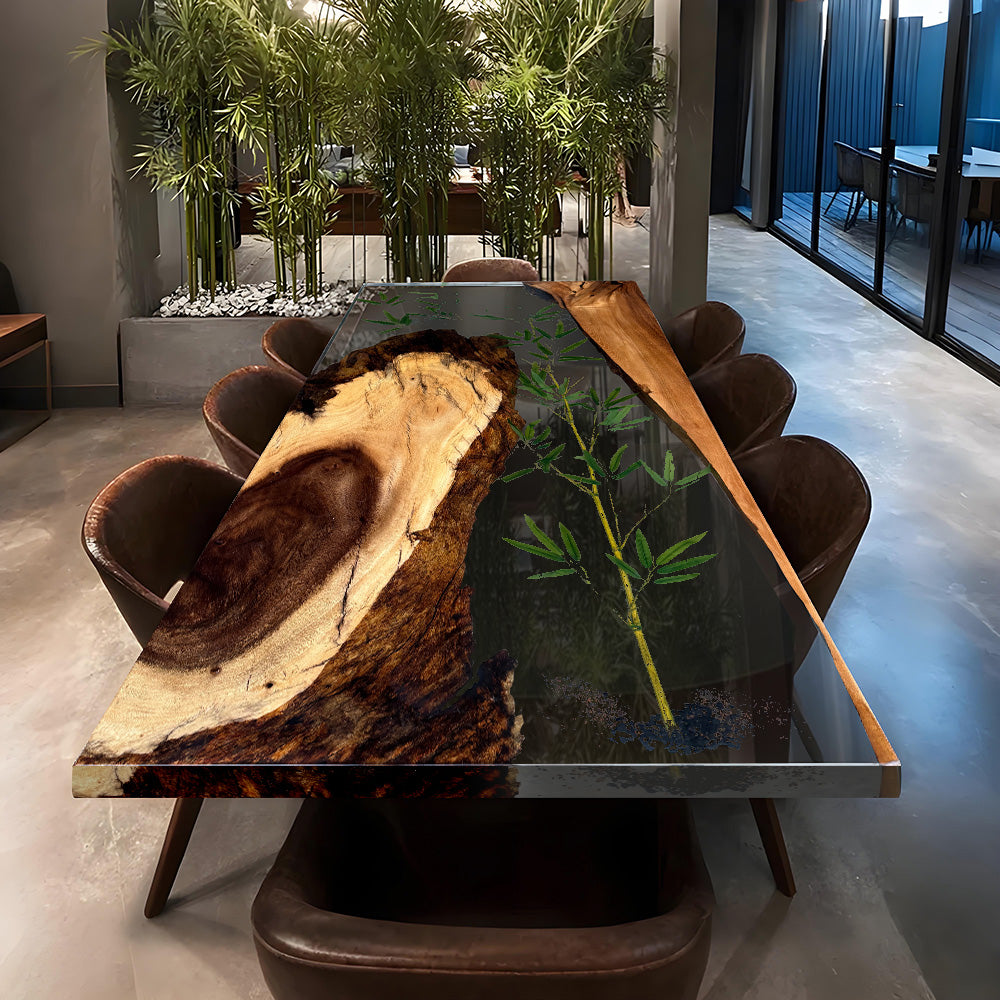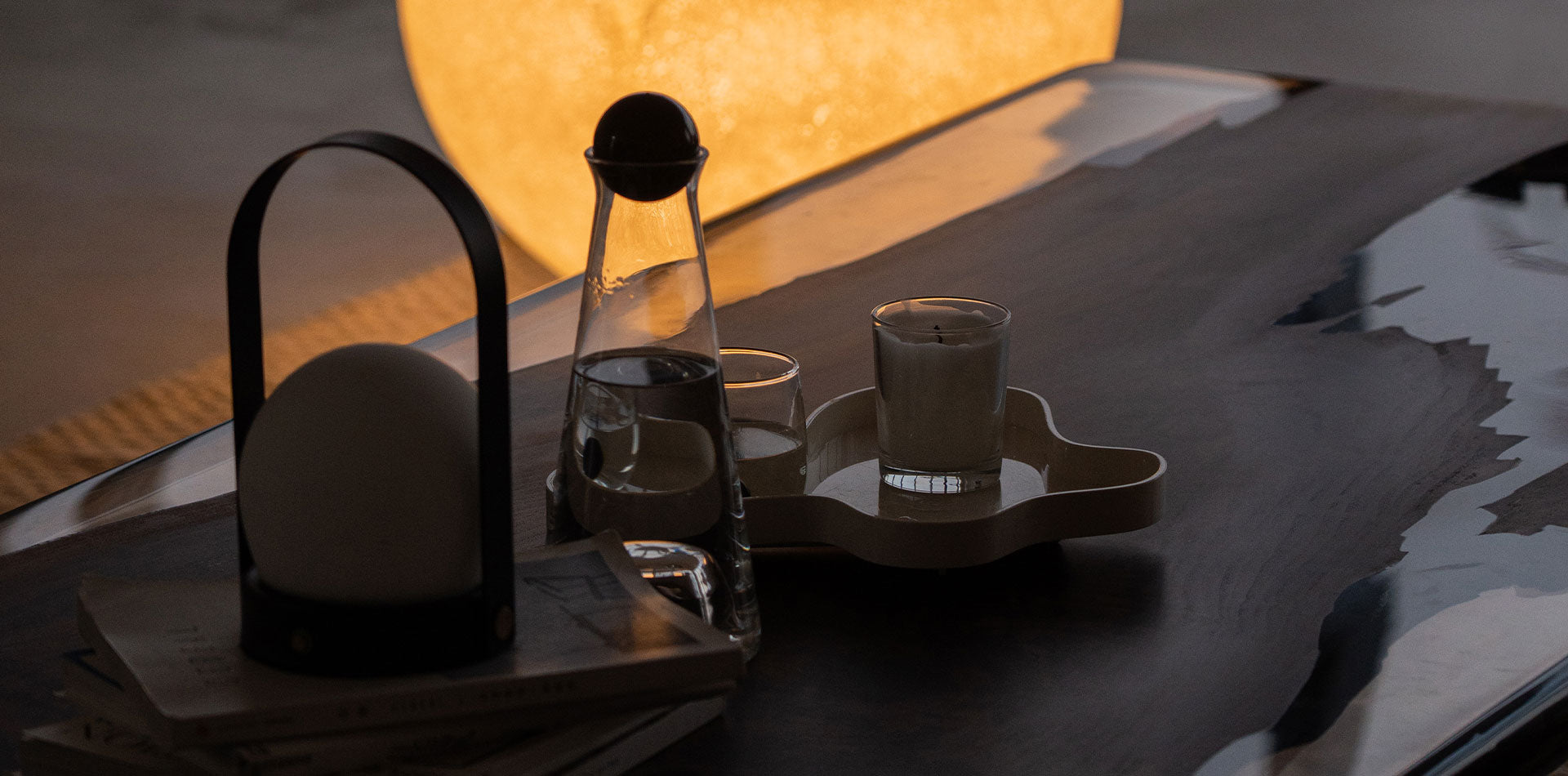The overall design of a custom epoxy resin table hinges not only on the resin's color but also critically on the choice of wood. While you may have encountered numerous articles on wood, many crucial details often go unnoticed. This guide delves deeper into wood characteristics and explains how to match specific wood types to their ideal grain patterns.
'I wanted the edges to be covered with wood.'
The wood that is suitable for this design layout needs to be a whole piece with a hard texture. Wood species with such characteristics include walnut, poplar and olive. Be especially careful to avoid choosing cunninghamia. Here are a few finished epoxy tables with this layout design.
Custom Luxury Black Walnut Wood River Epoxy Table
Wide slabs of rich walnut envelop both long sides of the epoxy, forming a seamless, natural border. The wood’s deep brown hue, dramatic grain swirls, and visible knots highlight nature’s artistry. Edges retain the wood’s raw, live-edge contours, polished smooth for tactile appeal. This full-wrap design protects the epoxy while showcasing the walnut’s raw beauty.

Custom Olive Transparent Epoxy Table River Dining Table
Unlike traditional tables with machined edges, this design retains the wood’s untamed, organic contours along its full perimeter. The irregular curves and textured bark remnants are purposefully showcased, not concealed. The olive ash slabs fully encapsulate the epoxy core, creating a bold "picture frame" effect. This highlights the wood’s unique character while structurally protecting the resin.

Custom Poplar Oval Wood Epoxy River Dining Table
Aspen wood wraps over the epoxy’s edge, creating a smooth, organic border that conceals resin seamswhile enhancing visual flow. By encasing resin edges, the design mimics a natural geologic splitrather than an artificial insert. The wood’s creamy whiteness amplifies the epoxy’s cool tones, evoking winter forests meeting thawing rivers.

'I want the layout to be richer. I don’t want just a straight river in the middle. It looks very monotonous. I want more resin layout.'
Perhaps you are a person who pursues a unique sense of design. This requirement can be met. In addition to human intervention, the natural shape of the wood itself is more eye-catching. The type of wood that can meet this requirement is cunninghamia wood..
Custom Cunninghamia Clear Resin River Square Epoxy Table
Asymmetrical slabs of cedar wood suspended mid-air in crystal-clear epoxy, creating a "fossilized forest" illusion. Raw-edged cedar (with charred shou sugi banaccents) contrasts with glass-smooth resin. Epoxy magnifies wood’s radial grain patterns like amber preserving ancient flora.

Custom Cunninghamia Epoxy Resin Blue Ocean Wave Table
A deep, translucent blue resin flows through the tabletop, evoking tropical waters frozen mid-motion—its glassy surface intensifying under light. The resin’s fluid curves mirror nature’s randomness, cutting through the wood like waves carving coastal rock. Knots and cracks become "shorelines," guiding the epoxy’s path. Resin fills deep cedar fissures vertically, creating 3D tidal pools that magnify the wood’s topography.

Custom Cunninghamia Gold Epoxy Resin Dining Table
Cunninghamia’s rich caramel tones and swirling grain patterns frame the resin, enhancing its "liquid gold" effect. Natural knots and burls create organic "banks" for the resin rivers, turning imperfections into focal points. The matte, earthy cedar contrasts with the glossy epoxy, creating visual tension between raw wilderness and refined artistry.

No matter which layout you choose, there will be a suitable wood to match it. You just need to understand the characteristics of the wood and choose the right wood to accompany you to complete a resin table. If you have any other questions about this, please feel free to contact us.

